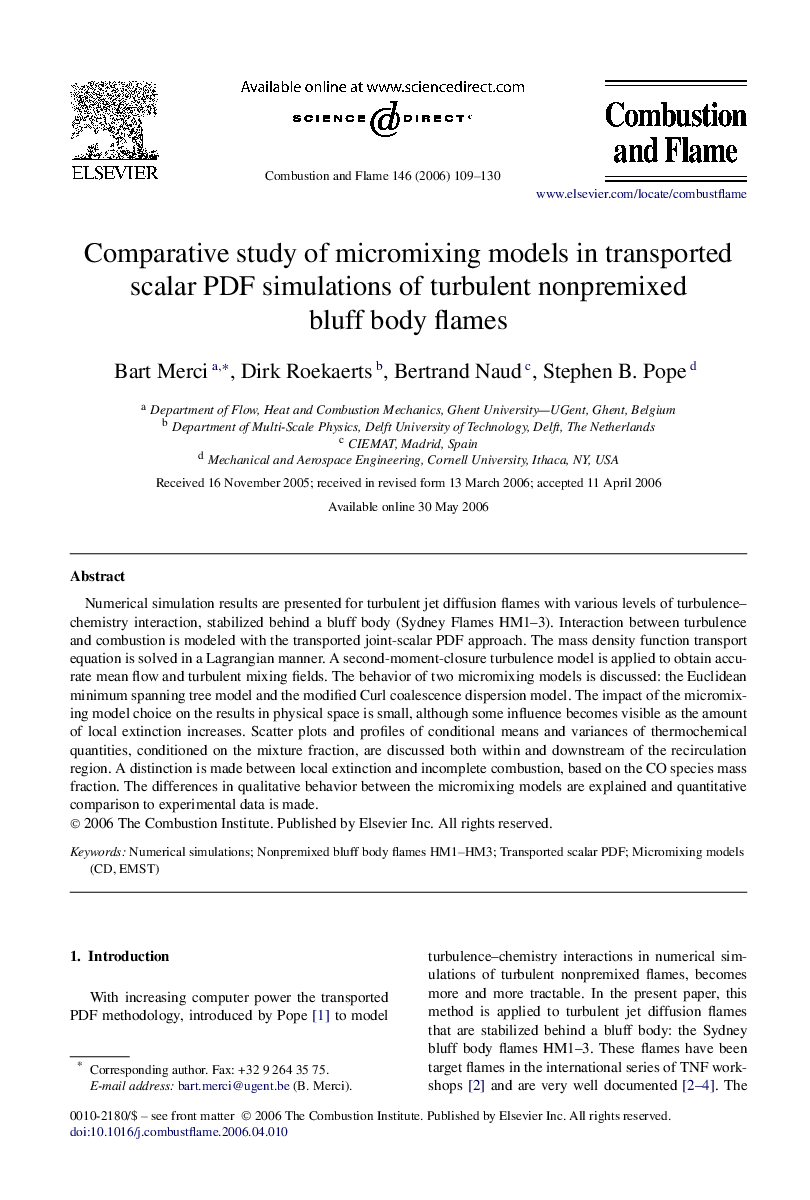| Article ID | Journal | Published Year | Pages | File Type |
|---|---|---|---|---|
| 169908 | Combustion and Flame | 2006 | 22 Pages |
Numerical simulation results are presented for turbulent jet diffusion flames with various levels of turbulence–chemistry interaction, stabilized behind a bluff body (Sydney Flames HM1–3). Interaction between turbulence and combustion is modeled with the transported joint-scalar PDF approach. The mass density function transport equation is solved in a Lagrangian manner. A second-moment-closure turbulence model is applied to obtain accurate mean flow and turbulent mixing fields. The behavior of two micromixing models is discussed: the Euclidean minimum spanning tree model and the modified Curl coalescence dispersion model. The impact of the micromixing model choice on the results in physical space is small, although some influence becomes visible as the amount of local extinction increases. Scatter plots and profiles of conditional means and variances of thermochemical quantities, conditioned on the mixture fraction, are discussed both within and downstream of the recirculation region. A distinction is made between local extinction and incomplete combustion, based on the CO species mass fraction. The differences in qualitative behavior between the micromixing models are explained and quantitative comparison to experimental data is made.
